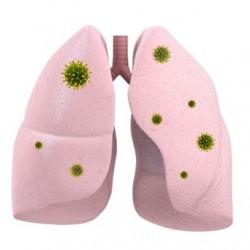
Respiratory syncytial virus (RSV) is a leading cause of serious lower respiratory illness in infants and the elderly. However, there is no licensed RSV vaccine and therapeutic options are limited.
James Crowe Jr., M.D., and colleagues are studying the cellular life cycle of the virus. In the January/February issue of mBio, they describe the molecular mechanisms that drive the assembly of the virus into thread-like structures (filaments) at the surface of epithelial cells (the types of cells that line the airways). They show that a specific “bit” of the RSV fusion protein – an amino acid residue in the “tail” of the protein – is critical for coordinating the assembly of these filaments by mediating the incorporation of other viral proteins. Mutation of this residue prevented filament formation and the incorporation of other viral proteins into virus-like particles.
The findings, the authors suggest, could help guide the development of new antiviral therapies and also provide new insights about how the virus is released from infected cells and spreads.
The research was supported by grants from the National Institute of General Medical Sciences, the National Institute for Allergy and Infectious Diseases, the Burroughs Wellcome Fund, and the March of Dimes.












